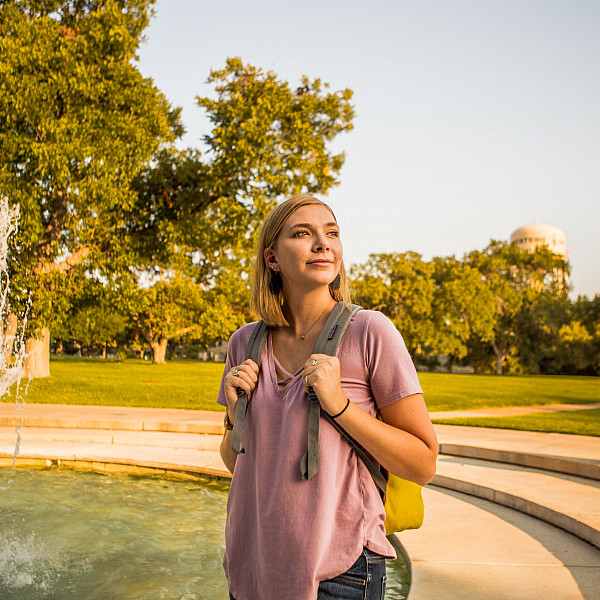News
Changing Course
October 20, 2020
October 20, 2020
Open gallery

Choosing which university to attend is a huge, and often overwhelming, decision. Students agonize for months over their options, comparing costs, scouring rankings, taking tours, and creating pro–con lists. It feels like the entire future depends on this one decision.
Luckily, like most decisions in life, the choice doesn’t have to be final. In fact, it often isn’t. According to The Princeton Review, about one-third of students transfer institutions at some point in their college career. Some students start at a two-year college with the intention of later transferring to a four-year university; others find their first-choice school has turned out to be a first-rate disappointment. Whatever the reason, transferring offers new experiences and opportunities.
According to The Princeton Review, about one-third of students transfer institutions at some point in their college career.
In honor of National Transfer Week, October 19–23, five transfer students discuss the long, often winding path that led them to Southwestern University. They come from different backgrounds and have different aspirations, but they shared one common goal: to find the right university for them. At Southwestern, they found it.
From private to Pirate
David Otterstetter ’22 grew up in Port Angeles, Washington, a former logging town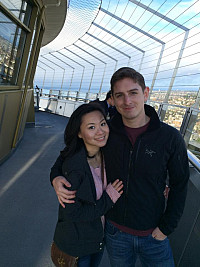
He soon moved to Seattle, where he landed a job in the gaming industry. It seemed like a dream come true—until it wasn’t. “We had a major release of a new video game, and my 40-hour week turned into an 80-hour week,” he says. “I realized this wasn’t the kind of work I wanted to be doing.”
Otterstetter was interested in being a teacher, but he knew he would have to go back to school and still wasn’t sure how to pay for it. He decided to join the U.S. Army and was eventually transferred to Fort Hood in Killeen, Texas, settling in nearby Georgetown. “Before I moved here, I had never heard of Southwestern, but I already knew I was going to go back to school, so I decided to look into it,” he says.
Much to his delight, Otterstetter discovered Southwestern had a strong education program. The more he learned about the university, the more he liked it. “Southwestern ticked a lot of boxes for me. It’s a smaller school. You have more intimate relationships with your professors. There are no gigantic lecture halls packed with 500 students,” he says. “Two years before I applied, Southwestern became my dream school.”
While the application process was fairly easy, Otterstetter didn’t feel confident about his chances. He decided to contact Director of Transfer Recruitment Scott Sandoval to see what he could do to strengthen his application. “I asked Scott if I could come in for an interview,” he says. “I was hoping maybe I could be just articulate enough to get in.”
His plan worked. Even better, thanks to his military service and a scholarship from Southwestern, he learned his tuition would be covered at 100%. Since starting at Southwestern in fall 2019, Otterstetter has made the dean’s list both semesters. He is majoring in education and minoring in international studies, although he is considering double majoring, which would push his graduation back to 2023. No matter where he ends up, he knows Southwestern has prepared him well.
“The Southwestern professors aren’t there just for their own research. They’re invested in their students,” he says. “This is a different institution entirely.”
The right school at the right time
After graduating from Vista Ridge High School in Cedar Park, Texas, in 2009, Sarah Shearin ’21 headed up the road to attend college at Baylor University. She knew she wanted to study psychology, but after two semesters in Waco, she decided to return home. “I wasn’t really ready at the time,” Shearin says. “I wasn’t the best student, so it didn’t work out.”
Shearin got a job at a local credit union, which paid the bills but wasn’t very fulfilling. She quit that job and started working at Trader Joe’s. At the same time, she started taking classes at Austin Community College (ACC). She earned her associate degree in general studies, but she didn’t want to stop there and began exploring transfer opportunities. One of her professors at ACC recommended she consider Southwestern.
“I liked the idea of being at a smaller school, especially after the smaller classes at ACC. I felt like I got lost in the shuffle at Baylor, and I didn’t know my professors,” she says. “But Southwestern was a private school, and I thought it would be too expensive.”
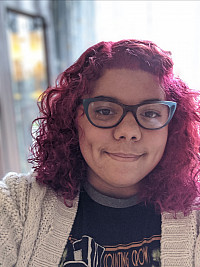
Shearin urges people considering going back to college not to talk themselves out of it. “Part of going back, you think it’s going to take too long to finish school or you’re too busy now,” she says. “But I’m already close to getting my bachelor’s degree. It’s been a goal for a long time, and it’s so close now. It’s crazy.”
A career adjustment
Daniel Whitney ’21 was born in Guatemala but raised in Austin. After leaving school at 15, Whitney traveled for a few years, eventually earning his GED in Kentucky before returning to Texas and working at a law firm. He later took a job as a claims adjuster with Progressive, which paid for him to attend ACC, where he studied mathematics. At the same time, his interest in computer science began to grow, as did his interest in transferring to a four-year university.
“When you write a computer program that provides a tangible benefit to someone, it’s satisfying,” Whitney says. “I started thinking it would be great to do this for a living.”
Whitney initially wasn’t interested in nearby Southwestern, deeming it too expensive. But after speaking with Sandoval at a transfer fair, he realized it was a possibility. “I was 30 years old at the time. For me, it was a money thing,” Whitney says. “Scott made it work for my situation. I absolutely would not be here if not for Scott and the effort that he made.”
The application process was quick and easy, he says, noting he met Sandoval in November 2018 and was registered to begin classes the following spring by the middle of December. He earned a Southwestern Scholarship in Science, Technology, Engineering, and Math, or S-STEM, sponsored by the National Science Foundation, and has made the dean’s list. “You receive a lot of individual attention here. I have access to my professors that I wouldn’t have had had I gone to a larger school,” says the computer science major and environmental studies minor. “There are no barriers.”
Whitney notes that for transfer students, there’s no easing in to the experience. “You come in with a lot of your lower-level classes done. Fortunately, the [Math and] Computer Science Department has made it work for me,” he says.
In addition to taking 19 hours of coursework and working part time as a software engineer, Whitney is applying for full-time jobs as a front-end developer following graduation. “I want to contribute to nonprofits. A lot of that involves creating a digital footprint for them,” Whitney says. “I want to build sites that provide some real contribution to the mission of making the world a place that works for everyone.”
Flexibility and adaptability
After graduating from Plano West Senior High School in Plano, Texas, in 2018, Chandler Curtsinger ’23 moved to Seattle with her family and began taking classes at North Seattle Community College. She soon moved back to Texas, started going to ACC, and began looking into transferring to a four-year college.
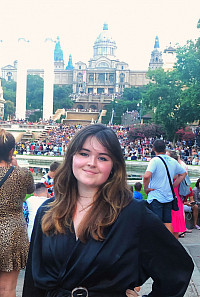
Discouraged by her findings, Curtsinger began exploring other options. She was attracted to Southwestern’s interdisciplinary approach to education. “Southwestern is really flexible with how you formulate your degree plan,” she says. “You can change your major pretty easily. In fact, they sometimes encourage you to change your major.”
After touring the campus, Curtsinger’s interest in Southwestern only grew. “I liked the vibe of the campus. Everyone was really nice and very helpful,” she says. “I like how small it is. You can get around easily, and if you need help finding something, someone will help you.”
Once she decided to apply, she found the process to be fairly simple, although gathering documents from multiple schools in multiple time zones was sometimes challenging. She was accepted for the spring 2020 semester and discovered that Southwestern would be significantly less expensive than the other colleges she was considering. It was important to her that she graduate with no debt, and thanks to the multiple scholarships she received, she will be able to do so. She made the dean’s list her first semester.
Curtsinger is double majoring in biology and art with a painting emphasis. While it may seem like a strange combination, it’s actually perfect for the career she hopes to enter: medical illustration. She became interested in the niche field during high school, when a local physician saw some of her artwork and commissioned her to do some illustrations for his office. She plans on going to graduate school and earning her master’s degree in medical illustration after graduating.
A better fit for a better future
A few days into her first semester at Texas State University, Alexis Lemus ’22 knew she’d made a mistake.
“I always knew Texas State wasn’t the place for me. People said I was a small-school person, but I refused to listen to them because they were adults and what did they know?” she says with a laugh. “Within a week, I knew they were right.”
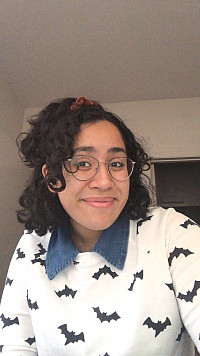
As part of the transfer process, Lemus had to audition for faculty from the Sarofim School of Fine Arts. She sang two songs and then sat down for an evaluation immediately afterward. “I could hear my chair shaking against the floor. I didn’t expect to like Southwestern as much as I did, so I was nervous,” she says. “The actual written part of the application process is the easy part. The hard part is the mental strain on you.”
After starting classes in fall 2019, Lemus acclimated quickly to the university. She began working as a tour guide, and she chartered the student chapter of the American Choral Directors Association. She also made the dean’s list both semesters. The first-generation student is putting herself through school and currently works as a resident assistant and orientation leader in addition to her tour guide duties.
“I can’t imagine being anywhere else. People say to me, ‘I keep forgetting you’re a transfer student. You’re so Southwestern,’” says Lemus, who hopes to study vocal pedagogy and choral conducting in graduate school and ultimately teach high school choir.
Lemus encourages students to listen to their instinct if they think their current university isn’t the right place for them. “Transferring is big and scary. You might feel like you failed because you’re not staying at your original institution,” she says. “But really, you’re being braver than anyone. You’re standing up and saying this isn’t right for you.”















